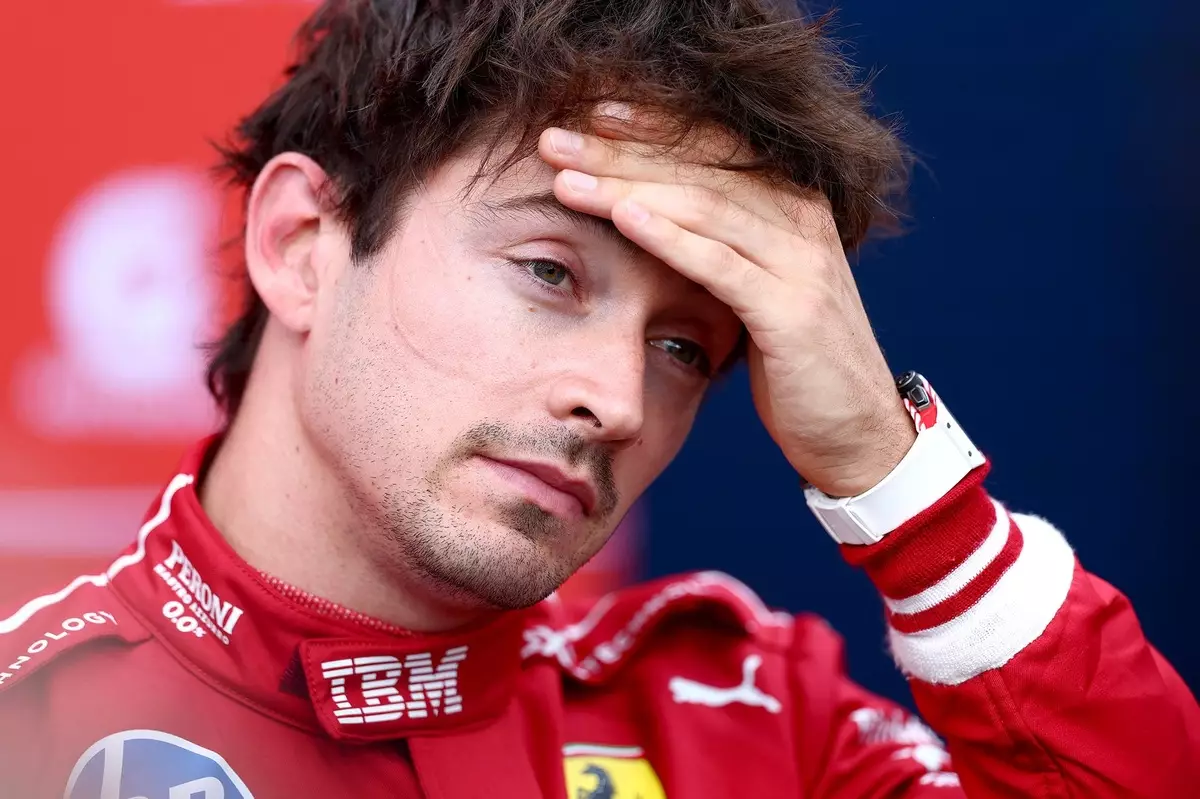Ferrari’s recent performances have often teetered on the edge of disappointment despite the visible efforts to bridge the gap to dominant teams like Red Bull and McLaren. Their latest sprint at the Belgian Grand Prix underscored a harsh reality: the car’s potential remains stubbornly out of reach. Charles Leclerc’s spectacular start — overtaking from fourth to third within the first lap — initially offered hope. But this excitement was short-lived. The fact that once ahead, Leclerc could not capitalize on the front-row pace, and his fight quickly evaporated into a distant memory, exposes the superficial nature of Ferrari’s current upgrade strategy.
What’s troubling is the persistent disconnect between the team’s optimistic spin about “lessons learned” and the undeniable performance deficit. Leclerc’s comment about not feeling “very far off the maximum potential” suggests a fragile confidence that masks underlying issues. The reality is that Ferrari’s upgrades, while visually extensive—featuring new underfloors, rear suspension, and a low-drag rear wing—have yet to deliver a breakthrough in competitiveness. It seems the Italian outfit is stuck in a cycle of incremental tweaks that offer little immediate benefit, ultimately failing to translate into race-winning performance.
Upgrades or Illusions? The Seesaw of Development
Ferrari’s deployment of an aggressive upgrade package signals a desire for rapid improvement, but these initiatives appear trapped in a limbo of diminishing returns. The new underfloor components, designed to optimize airflow and diffuser performance, were supposed to unlock more speed. Yet the absence of noticeable gains in overtaking or lap time reveals a disconnect between engineering ambitions and on-track reality.
It’s feasible—and perhaps probable—that Ferrari’s current development focus is misguided or insufficiently tested. The upgrades, while technically advanced, seem to lack the crucial refinement needed for consistency across varied circuits and conditions. The team’s inability to outrun more straightforward competitors like McLaren, despite upgrades, reflects systemic issues rooted too deep within their design philosophy or perhaps their resource allocation. The disparity between scientific effort and tangible performance manifests as a bitter frustration for staff and fans alike, sowing doubts about Ferrari’s long-term competitive prospects.
The Myth of the Upgraded Machine: Disconnection and Disillusionment
A significant concern lies in the communication chaos surrounding Ferrari’s updates. Lewis Hamilton’s confusion over his own upgrade timeline, and the vague statements dismissing any major component changes during the Canadian GP, highlight a broader problem: a lack of clarity and transparency. If the team’s internal messaging about modifications is inconsistent or obscure, it naturally breeds skepticism about their development program.
This confusion isn’t confined to external observers. Within Ferrari, there might be a cultural issue of overpromising and underdelivering, fostering a situation where upgrades are rushed or inadequately validated before racing. A major upgrade package, such as the new rear suspension geometry, may have been implemented with good intentions but without the rigorous real-world data to truly verify performance gains. As a result, Ferrari remains in a perpetual cycle of trial, error, and vague optimism, which ultimately undermines driver confidence and team morale.
Racecraft and Reality: The Human Element
Leclerc’s comments post-race reveal a frustrating understanding: the car’s capabilities aren’t enough to challenge the frontrunners, and the team’s development trajectory may not shift course swiftly enough. His acknowledgment that there is “learning to take away” but skepticism about fighting with rivals demonstrates a deep-seated sense of stagnation.
Hamilton’s remarks on Spa further illustrate the complexities of upgrading within a turbulent environment. His fluctuating race results—fighting from 18th to a mere 15th—highlight the challenge of making marginal gains amid a competitive field that continues to evolve. These drivers are not just battling their cars but a broader system that appears to be struggling with scalability. Improvements are incremental rather than transformational, and that can erode driver confidence, leading to a cycle of frustration and underachievement.
Ferrari’s persistent inability to translate technical development into race-winning performance underscores the essential truth: development is only as powerful as its practical application. Simply put, without clear, measurable gains, efforts look superficial and ultimately futile. The team’s current strategy must evolve from a focus on hardware upgrades to a more holistic approach—reassessing their engineering philosophy, resource priorities, and perhaps even leadership mentality—to truly reclaim their competitive stature.

